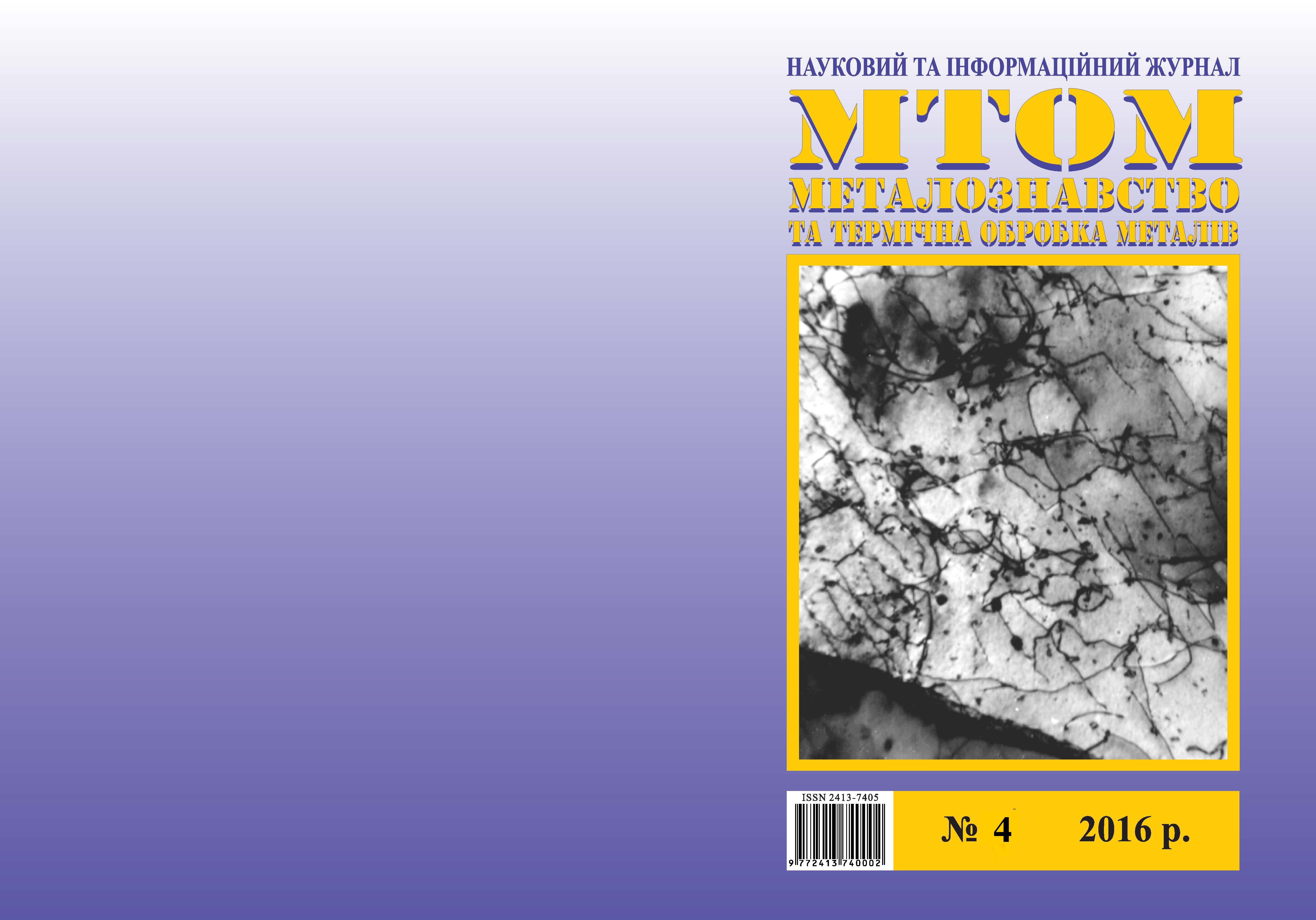Evaluation of railway wheels damage under contact fatigue taking into account local heating roll surface
Keywords:
wheel steel, strength, cyclic crack resistance, microstructure, shelling, operational reliability, modification by rare earth metals and calcium, minimized of aluminum and titanium contentAbstract
Problem definition. Developing the competitive production technology of high performance rail wheels without significant cost increase is an up-to-done task for the metallurgy of Ukraine. Chemical This composition of a wheel steel and its production technology should be improved in order to provide optimal combination of its high wear resistance as well as the high resistance against of the formation of operational defects (sliders and caves) on the rolling surface. Purpose of the study. Analyzing changes in damaging the rolling surfaces for various types of rail wheels at the conditions of contact fatigue as well as revealing the relationship between the damages and the cyclic crack growth resistance of the wheel steels. Methodology. The tests were performed on a specially designed stand. Steel samples modeling the wheel and the rail were used. Spot defects were initiated by contact welding to evaluate the influence of local heating. The strength and cyclic crack growth resistance characteristics were determined by the standard methods. Microstructural surface morphology of the specimens and their rolling surface damages were studied using optical microscope MMP-2P. The images were analyzed using a specially developed program for evaluating the geometric sizes of rolling surface damages on the modeling samples of the wheel steels. Results. The influence of the chemical composition of wheel steels and their modification by rare earth metals and by calcium with simultaneous minimization of aluminum and titanium contents, on structure of the steels and their strength and cyclic crack growth resistance characteristics has been studied. The dependence of damaging the rolling surfaces of the modeling rail wheels on the cyclic crack growth resistance characteristics of these steels was established. Scientific novelty. It is experimentally confirmed, that steels liability to formation of shelling on the wheel rolling surface is related to cyclic fracture toughness of steels. Practical significance. The new approach is proposed for the formation (choice) of high-strength steels for railway wheels. It is based on the diagram of in-service reliability of wheel steels, combining the improved characteristic of wear resistance and resistance to shelling formation in the contact fatigue conditions.
References
Hondius H. Exploiting synergies in the wheelset market / H. Hondius // Railway gazette international. – 2008. – 164, № 10. – Pp. 822–824. − Режим доступу: http: //www.railwaygazette.com/publications/railway-gazette-international/about.html
Cassidy Ph. Perspective materials for production of railway wheels / Ph. Cassidy // International Railway Journal. – 2001. – № 12. – Pp. 40–41.
Узлов И. Г. Научная разработка и производственная реализация технологии микролегирования и термоупрочнения высокоизносостойких железнодорожных цельнокатаных колес / И. Г. Узлов, К. И. Узлов, О. Н. Перков, А. В. Кныш // Фундаментальные и прикладные проблемы черной металлургии. – 2004. – Вып. 7. – С. 231–243.
Панасюк В. В. Нормативи на сталі для суцільнокатаних високоміцних залізничних коліс / В. В. Панасюк, О. П. Осташ, І. М. Андрейко та ін. // Проблеми ресурсу і безпеки експлуатації конструкцій, споруд та машин. – Київ : Інститут електрозварювання ім. Е. О. Патона НАН України, 2012. – С. 594–598.
Ostash O.P. On the concept of selection of steels for high-strength railroad wheels / O.P. Ostash, V.H. Anofriev, I.M. Andreiko, L.A. Muradyan, V.V. Kulyk // Materials Science. – 2013. – 48, № 6. – Pр. 697–703. – Режим доступу: http: //link.springer.com/article/10.1007/s11003-013-9557-7
Справочник по триботехнике : справ. пособ. в 3 т. / Под. ред. М. Хебды, А. В. Чичинадзе. – Москва : Машиностроение; Варшава : ВКЛ, 1989. – 135 с.
Андрейко І. Дослідження пошкоджуваності поверхні кочення залізничних коліс / І. Андрейко, В. Кулик, В. Прокопець. − Київ : Машинознавство, 2011. – № 1–2. – С. 32–36. – Режим доступу : http: //nbuv.gov.ua/UJRN/maz_2011_1-2_10
Механика разрушения и прочность материалов : справ. пособ. в 4 т. / О. Н. Романив, С. Я. Ярема, Г. Н. Никифорчин и др. : под общ. ред. В. В. Панасюка. – Киев : Наукова думка, 1988-1990. – Т. 4: Усталость и циклическая трещиностойкость конструкционных материалов. – 1990. – 680 с.
Downloads
Published
Issue
Section
License
Authors that are published in this journal agree to follow the conditions:
Authors reserve the right to the authorship of his work and cede the right to the journal of first publication of this work on conditions of the license under the Creative Commons Attribution License, which allows others to distribute it freely with the obligatory reference to the author of the original work and the first publication of the work in this journal.

